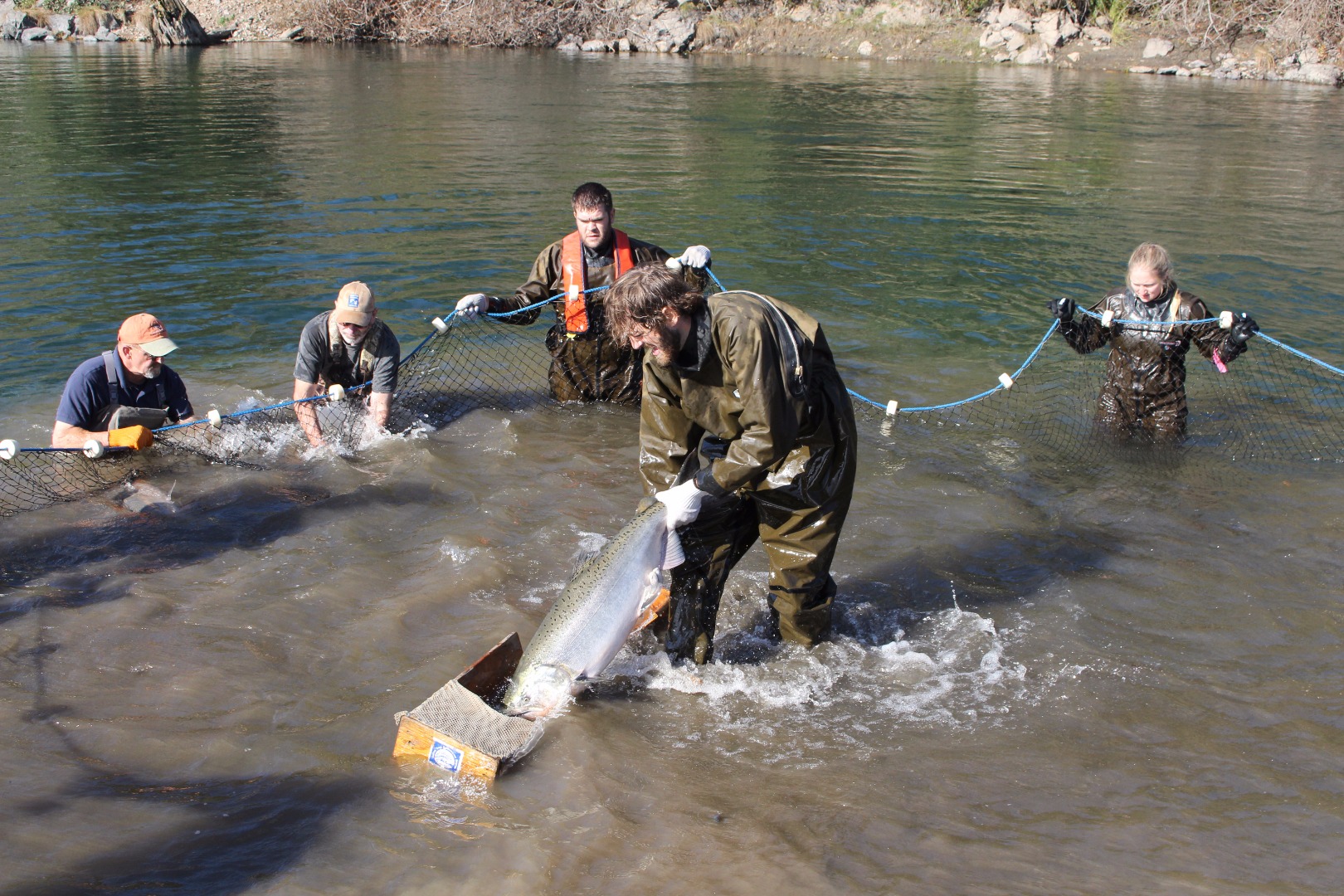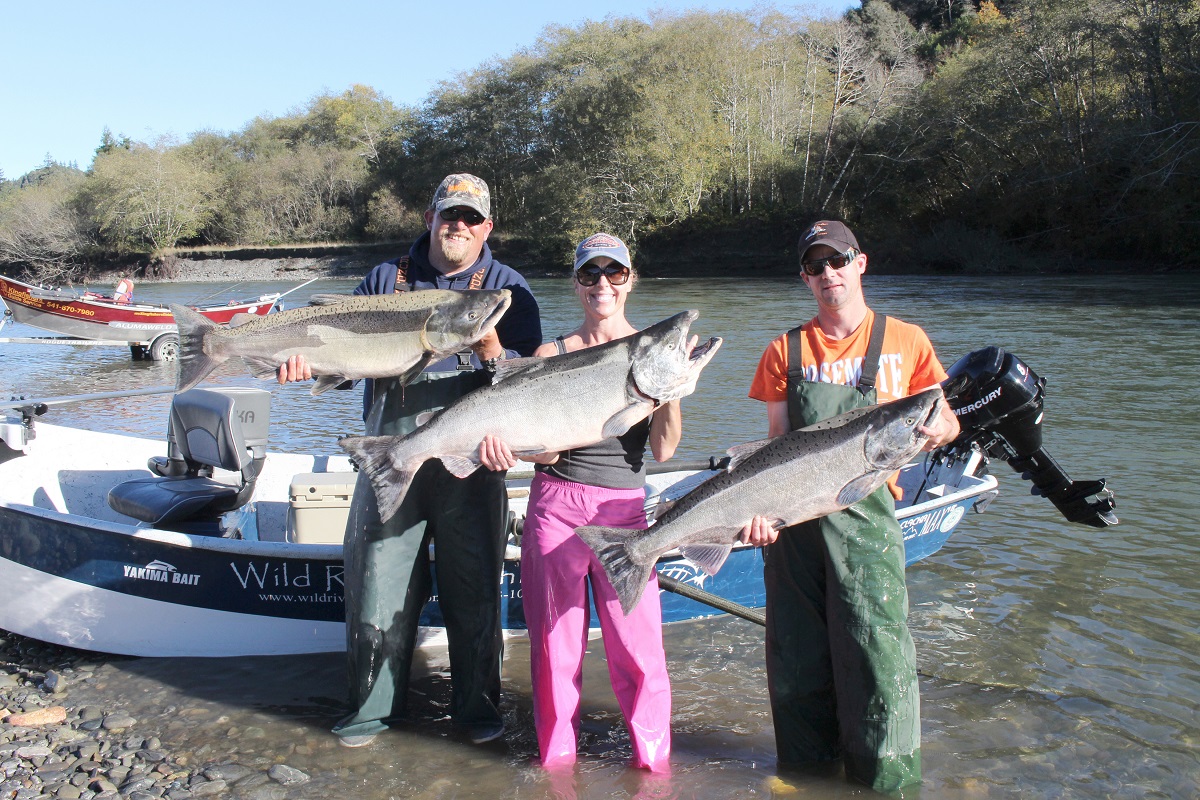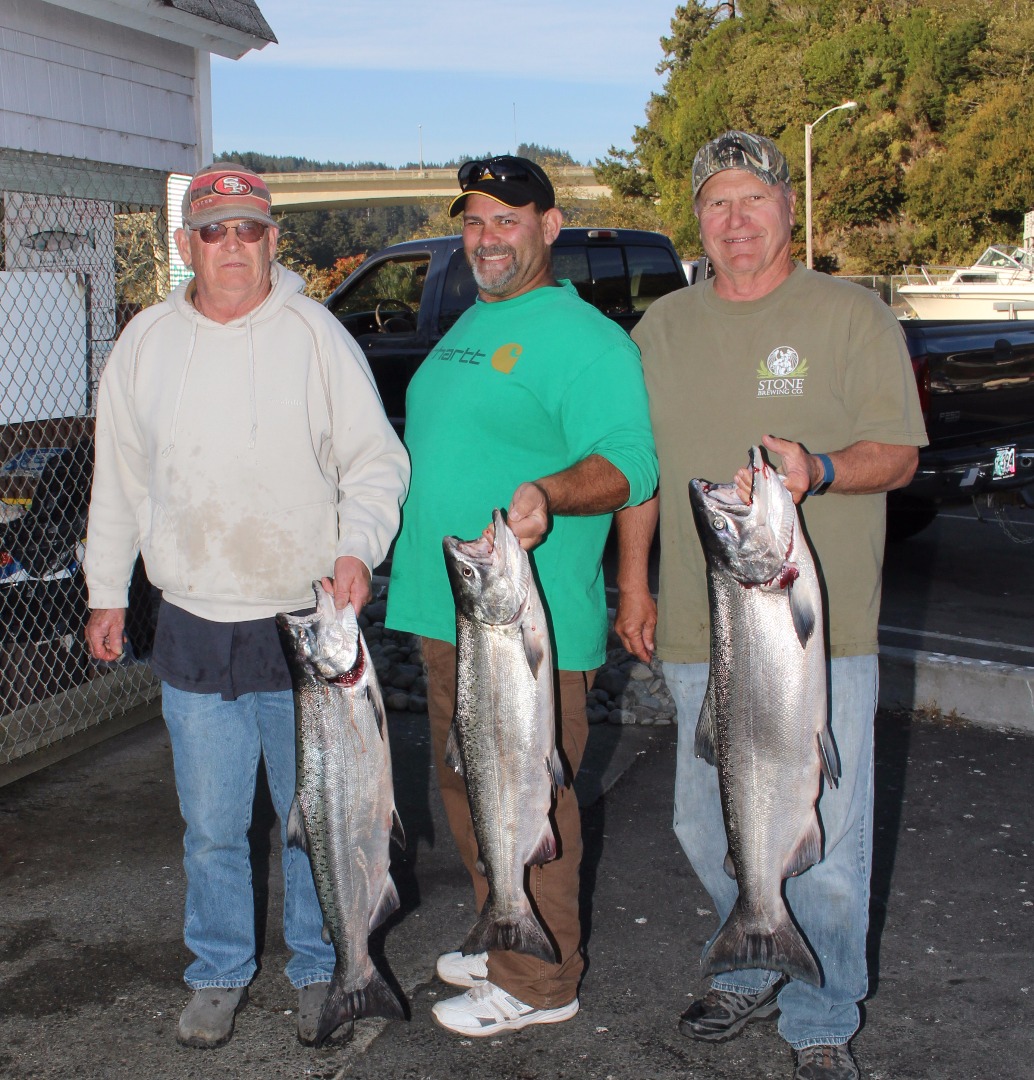Saltwater Fish Report for 11-4-2017
Chetco River Opens for all Salmon Techniques
Chetco River - Brookings, OR (Curry County)

by Larry Ellis
11-4-2017
Website
Today, November 4, the Chetco River up to the salmon deadline at Nook Creek will open up to all legal forms of fishing.
Up until November 4, the section of the Chetco from rivermile 2.2 up to Nook Creek was open under a "bobber only" or "fly fishing only" anti-snagging restriction. Now, you can plunk, pull plugs, back-bounce roe or use any other legal salmon-fishing technique up to the deadline at Nook Creek.
But, unless enough precipitation raises the Chetco higher than its present 225 cubic feet per second, anglers will be a lot better off throwing a bobber with either a tuna belly strip, a fresh sand shrimp or a sand shrimp cocktail. 225 cfs is just not enough flow for anglers to deploy anything but bobber-fishing techniques.
Then there's the flashlight-lit glow-in-the-dark Kastmaster at the crack of dawn. But I digress.
However, rain just might raise the Chetco this weekend, so be prepared to bust out your raingear.
And boy oh boy, are there a lot of chrome-bright Chinook in the deeper, lower Chetco holes as well as in the tidewater holes such as Social Security Hole. I know they're there because I saw them last Tuesday, and they're going to keep on coming.
It's hard to believe that this time last year, rain had pelted the river enough to make seining Chinook for the Chetco Broodstock Program nothing less than a formidable task. But what a difference a year can make!
Now, ODFW has nearly reached their goal of getting 65 pairs of buck and doe Chinook for their 200,000 smolt goal.
Last Tuesday, ODFW with the help of volunteers from the Oregon South Coast Fishermen, seined so many Chinook that they were actually throwing some monsters over the net and back into the Chetco.
It reminded me of a scene from the movie Amadeus when Emperor Joseph was telling Mozart that one of operas was ingenious, but it just had "too many notes," he was quoted to say. "Just cut a few and it'll be perfect."
"Which few did you have in mind, Majesty?" Mozart quipped.
Similarly, in the case of last Tuesday's seining, the net overflowed to capacity with too many kings. It was ODFW's task to decide which kings they were going to throw back and which ones they were going to keep for their operatic spawning mission.
It was ODFW's intention to keep as many of the large males as they could muster, so back into the drink went female after female, and some mighty brawny ones I might add.
ODFW needed big bucks and they got what they came for, many of which were easily between 30 and 40 pounds.
But some strapping hens were also kept from the seining.
"We definitely put a few more males in the truck than females," said Steve Mazur, biologist for ODFW. "We now have 120 fish at the (Elk River) hatchery, and about 40 percent of them are males. We'll know more in a week or two when the hatchery personnel goes through the raceways and give us more of an accurate number of males and females."
It was estimated that at least 30 volunteers from the Oregon South Coast Fishermen were pulling the seine in which to corral the fish, immediately before getting a bath from the frothing river water caused by the thrashing Chetco River Chinook.
They would then measure the salmon, note their sex and carry away the heavy kings in inner tube tires. The tires, also called boots, prevent the Chinook from damaging themselves as they are carried to the hatchery truck. The work that these volunteers do is invaluable for the Chetco River and for ODFW.
"We couldn't do it without those guys," Mazur emphasized.
So watch the Chetco River gage like a hawk and determine your fishing technique based on the river flow.
If the flow stays between 220 and 500 cfs, a-bobbering we will go. If for some reason rains raise the river to over 1,000 cfs, the fish will leave their resting spots and make tracks upriver.
If the river rises between 1,500 and 4,000 cfs, then pulling plugs, back-bouncing roe and drift-fishing will be the techniques that rule the river.
If the river pushes over 4,000 cfs, wait for it to drop and clear, where plunking will be the name of the game for shore anglers.
Larry Ellis, author, writer, columnist and photographer has had a 50-year passion for fishing in California and Oregon's saltwater and freshwater venues. He is a well-known writer for Oregon, Washington and California Fishing and Hunting News, Northwest Sportsman, California Sportsman and Pacific Coast Sportfishing. He currently writes monthly for Salmon Trout Steelheader Magazine, and is the author of two books, "Plug Fishing for Salmon" and "Buoy 10, the World's Largest Salmon Run." Both books can be bought from Amato Publications (amatobooks.com), Amazon and eBay. Ellis particularly loves living in his hometown of Brookings, Oregon - The heart of salmon country and gateway to fishing paradise.
More Reports
Expanded Crabbing Closure Announced
Chetco River
10-28-2017
Last week, the Oregon Department of Agriculture and the Oregon Department of Fish and Wildlife announced an expanded closure of...... Read More
Chinook Showing in Chetco Tidewater
Chetco River
10-21-2017
The first rains of the season have sparked Chinook to enter upper and lower Chetco River tidewater holes, with most...... Read More

Website Hosting and Design provided by TECK.net